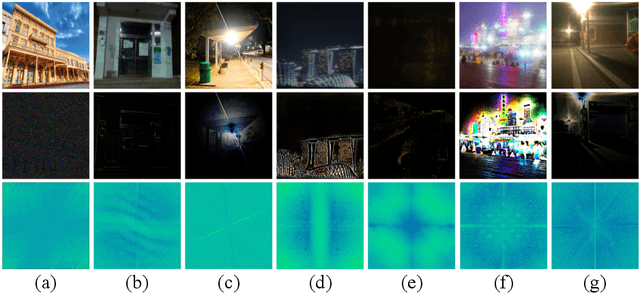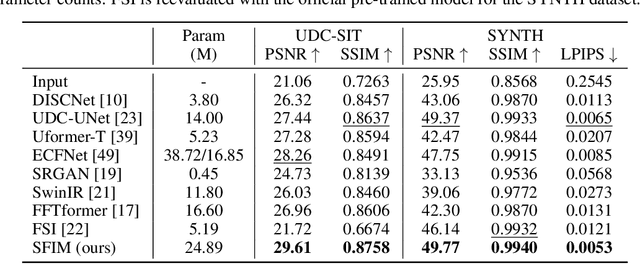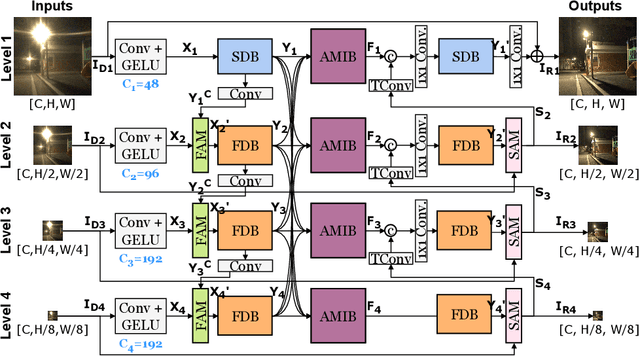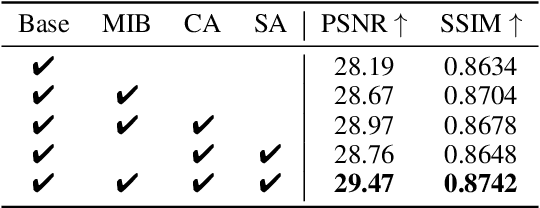Jaejin Lee
Thunder-NUBench: A Benchmark for LLMs' Sentence-Level Negation Understanding
Jun 18, 2025Abstract:Negation is a fundamental linguistic phenomenon that poses persistent challenges for Large Language Models (LLMs), particularly in tasks requiring deep semantic understanding. Existing benchmarks often treat negation as a side case within broader tasks like natural language inference, resulting in a lack of benchmarks that exclusively target negation understanding. In this work, we introduce Thunder-NUBench, a novel benchmark explicitly designed to assess sentence-level negation understanding in LLMs. Thunder-NUBench goes beyond surface-level cue detection by contrasting standard negation with structurally diverse alternatives such as local negation, contradiction, and paraphrase. The benchmark consists of manually curated sentence-negation pairs and a multiple-choice dataset that enables in-depth evaluation of models' negation understanding.
Thunder-Tok: Minimizing Tokens per Word in Tokenizing Korean Texts for Generative Language Models
Jun 18, 2025Abstract:This paper introduces Thunder-Tok, a new Korean tokenizer designed to reduce token fertility without compromising model performance. Our approach uses a rule-based pre-tokenization method that aligns with the linguistic structure of the Korean language. We also create a seed vocabulary containing tokens that resemble linguistic units and employ a branching entropy-based selection algorithm. These techniques increase the average token length, thus lowering fertility while preserving linguistic information. Experimental results indicate that Thunder-Tok reduces fertility by approximately 10% (i.e., reduces the number of tokens by 10%, improving the inference speed by 10%) compared to BPE without compromising performance across various downstream tasks. These findings demonstrate that our linguistically informed approach is effective and practical for designing efficient tokenizers for language models.
Thunder-DeID: Accurate and Efficient De-identification Framework for Korean Court Judgments
Jun 18, 2025Abstract:To ensure a balance between open access to justice and personal data protection, the South Korean judiciary mandates the de-identification of court judgments before they can be publicly disclosed. However, the current de-identification process is inadequate for handling court judgments at scale while adhering to strict legal requirements. Additionally, the legal definitions and categorizations of personal identifiers are vague and not well-suited for technical solutions. To tackle these challenges, we propose a de-identification framework called Thunder-DeID, which aligns with relevant laws and practices. Specifically, we (i) construct and release the first Korean legal dataset containing annotated judgments along with corresponding lists of entity mentions, (ii) introduce a systematic categorization of Personally Identifiable Information (PII), and (iii) develop an end-to-end deep neural network (DNN)-based de-identification pipeline. Our experimental results demonstrate that our model achieves state-of-the-art performance in the de-identification of court judgments.
ANPMI: Assessing the True Comprehension Capabilities of LLMs for Multiple Choice Questions
Feb 26, 2025Abstract:Multiple-choice benchmarks, consisting of various prompts and choices, are among the most widely used methods to assess a language model's natural language understanding capability. Given a specific prompt, we typically compute $P(Choice|Prompt)$ to evaluate how likely a language model is to generate the correct choice compared to incorrect ones. However, we observe that performance measured using this approach reflects not only the model's comprehension of the prompt but also its inherent biases for certain choices regardless of the prompt. This issue makes it challenging to accurately measure a model's natural language understanding, as models may select the answer without fully understanding the prompt. To address this limitation, we propose a novel metric called ANPMI, which normalizes Pointwise Mutual Information (PMI) by $-\log P(Choice)$. ANPMI provides a more accurate assessment of the model's natural language understanding by ensuring that it is challenging to answer a question without properly understanding the prompt.
Integrating Spatial and Frequency Information for Under-Display Camera Image Restoration
Jan 30, 2025



Abstract:Under-Display Camera (UDC) houses a digital camera lens under a display panel. However, UDC introduces complex degradations such as noise, blur, decrease in transmittance, and flare. Despite the remarkable progress, previous research on UDC mainly focuses on eliminating diffraction in the spatial domain and rarely explores its potential in the frequency domain. It is essential to consider both the spatial and frequency domains effectively. For example, degradations, such as noise and blur, can be addressed by local information (e.g., CNN kernels in the spatial domain). At the same time, tackling flares may require leveraging global information (e.g., the frequency domain). In this paper, we revisit the UDC degradations in the Fourier space and figure out intrinsic frequency priors that imply the presence of the flares. Based on this observation, we propose a novel multi-level DNN architecture called SFIM. It efficiently restores UDC-distorted images by integrating local and global (the collective contribution of all points in the image) information. The architecture exploits CNNs to capture local information and FFT-based models to capture global information. SFIM comprises a spatial domain block (SDB), a Frequency Domain Block (FDB), and an Attention-based Multi-level Integration Block (AMIB). Specifically, SDB focuses more on detailed textures such as noise and blur, FDB emphasizes irregular texture loss in extensive areas such as flare, and AMIB enables effective cross-domain interaction. SFIM's superior performance over state-of-the-art approaches is demonstrated through rigorous quantitative and qualitative assessments across three UDC benchmarks.
UDC-VIT: A Real-World Video Dataset for Under-Display Cameras
Jan 30, 2025



Abstract:Under Display Camera (UDC) is an advanced imaging system that places a digital camera lens underneath a display panel, effectively concealing the camera. However, the display panel significantly degrades captured images or videos, introducing low transmittance, blur, noise, and flare issues. Tackling such issues is challenging because of the complex degradation of UDCs, including diverse flare patterns. Despite extensive research on UDC images and their restoration models, studies on videos have yet to be significantly explored. While two UDC video datasets exist, they primarily focus on unrealistic or synthetic UDC degradation rather than real-world UDC degradation. In this paper, we propose a real-world UDC video dataset called UDC-VIT. Unlike existing datasets, only UDC-VIT exclusively includes human motions that target facial recognition. We propose a video-capturing system to simultaneously acquire non-degraded and UDC-degraded videos of the same scene. Then, we align a pair of captured videos frame by frame, using discrete Fourier transform (DFT). We compare UDC-VIT with six representative UDC still image datasets and two existing UDC video datasets. Using six deep-learning models, we compare UDC-VIT and an existing synthetic UDC video dataset. The results indicate the ineffectiveness of models trained on earlier synthetic UDC video datasets, as they do not reflect the actual characteristics of UDC-degraded videos. We also demonstrate the importance of effective UDC restoration by evaluating face recognition accuracy concerning PSNR, SSIM, and LPIPS scores. UDC-VIT enables further exploration in the UDC video restoration and offers better insights into the challenge. UDC-VIT is available at our project site.
FED: Fast and Efficient Dataset Deduplication Framework with GPU Acceleration
Jan 02, 2025Abstract:Dataset deduplication plays a crucial role in enhancing data quality, ultimately improving training performance and efficiency of LLMs. A commonly used method for data deduplication is the MinHash LSH algorithm. Recently, NVIDIA introduced a GPU-based MinHash LSH deduplication method, but it remains suboptimal, leaving room for further improvement in processing efficiency. This paper proposes a GPU-accelerated deduplication framework \sys that optimizes MinHash LSH for GPU clusters and leverages computationally efficient and partially reusable non-cryptographic hash functions. \sys significantly outperforms the CPU-based deduplication tool included in SlimPajama by up to 58.3 times and the GPU-based deduplication tool included in NVIDIA NeMo Curator by up to 8.6 times when processing 1 million documents with a node of four GPUs. Deduplication of 1.2 trillion tokens is completed in just 5.1 hours in a four-node, 16-GPU environment. The related code is publicly available on GitHub (https://github.com/mcrl/FED).
Attention-based Reinforcement Learning for Combinatorial Optimization: Application to Job Shop Scheduling Problem
Jan 29, 2024



Abstract:Job shop scheduling problems are one of the most important and challenging combinatorial optimization problems that have been tackled mainly by exact or approximate solution approaches. However, finding an exact solution can be infeasible for real-world problems, and even with an approximate solution approach, it can require a prohibitive amount of time to find a near-optimal solution, and the found solutions are not applicable to new problems in general. To address these challenges, we propose an attention-based reinforcement learning method for the class of job shop scheduling problems by integrating policy gradient reinforcement learning with a modified transformer architecture. An important result is that our trained learners in the proposed method can be reused to solve large-scale problems not used in training and demonstrate that our approach outperforms the results of recent studies and widely adopted heuristic rules.
CyCNN: A Rotation Invariant CNN using Polar Mapping and Cylindrical Convolution Layers
Jul 21, 2020



Abstract:Deep Convolutional Neural Networks (CNNs) are empirically known to be invariant to moderate translation but not to rotation in image classification. This paper proposes a deep CNN model, called CyCNN, which exploits polar mapping of input images to convert rotation to translation. To deal with the cylindrical property of the polar coordinates, we replace convolution layers in conventional CNNs to cylindrical convolutional (CyConv) layers. A CyConv layer exploits the cylindrically sliding windows (CSW) mechanism that vertically extends the input-image receptive fields of boundary units in a convolutional layer. We evaluate CyCNN and conventional CNN models for classification tasks on rotated MNIST, CIFAR-10, and SVHN datasets. We show that if there is no data augmentation during training, CyCNN significantly improves classification accuracies when compared to conventional CNN models. Our implementation of CyCNN is publicly available on https://github.com/mcrl/CyCNN.
 Add to Chrome
Add to Chrome Add to Firefox
Add to Firefox Add to Edge
Add to Edge